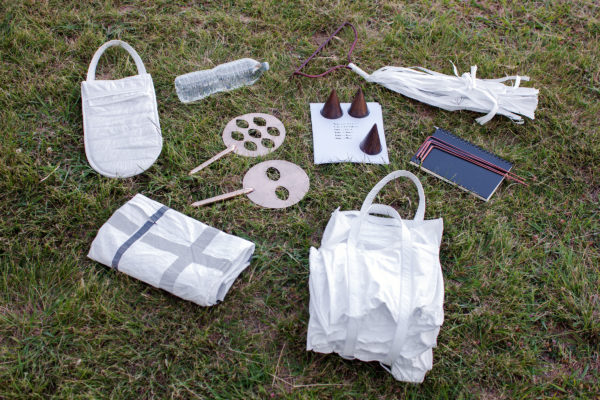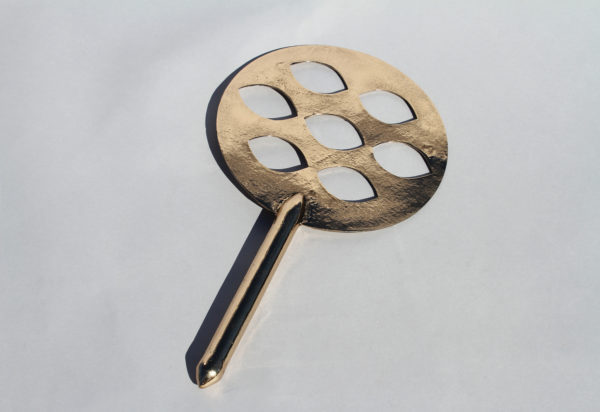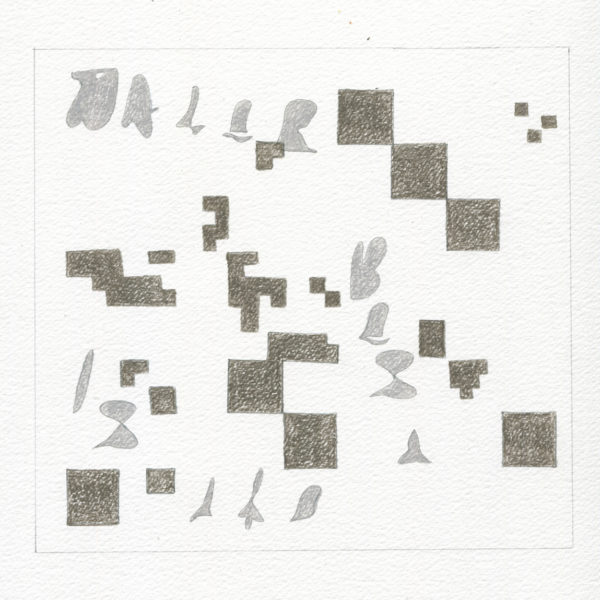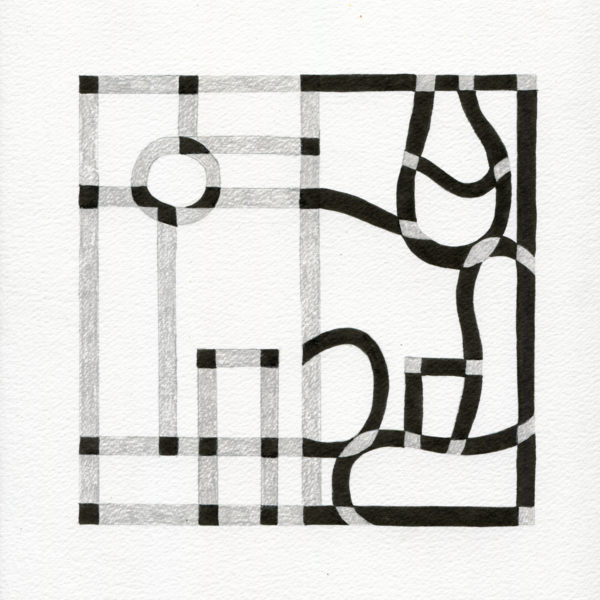Each performer or set of performers assuming the role of ∆ made use of a “toolkit” that lived on-site—a specially-designed container made to hold scores, objects, and materials for use in daily tasks, interactions and meditations. Sculptural as well as functional within each performance, objects in the toolkit served alternately as props, costumes, and staging materials (a banner becomes a garment, becomes a blanket, becomes a shelter, for example); tools for documentation, communication, sound-making, writing, and analysis; and elements in choreographed exchanges, dances, and musical gestures.
Every day ∆ opened the toolkit to find instructions and resources for performance and engagement with visitors—ceremonial exchanges, as well as actions staged for video, photographer, or sound recorder—remote cartography (tracing boundaries and topographies), and processes of filtering, purifying, processing, and transmitting. At the end of each day, ∆ returned the contents to the toolkit where they are stored until the next day.




